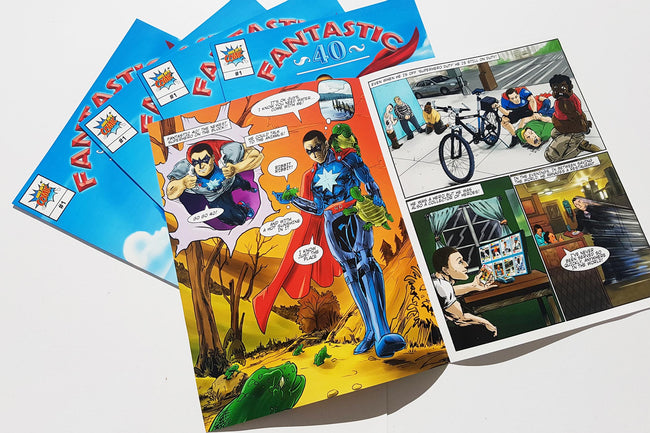
10 Mistakes New Comic Creators Make (and How to Avoid Them)
So, you want to make a comic? That’s amazing. Welcome to the club of brilliant weirdos who turn their wild ideas into illustrated masterpieces. But before you grab your pens and unleash your imagination, let's make sure you're not falling into the same traps as every new comic creator ever.
Because yep—we’ve all made these mistakes. And we’re here to help you dodge them like a ninja in a laser maze.
You might also like to check out these blogs
Mistake #1: Starting Without a Plan
“I’ll just wing it!” — Famous last words.
We love spontaneous creativity as much as anyone, but even the most epic comic needs some kind of structure. Whether it’s a basic plot, character outline, or just a sticky note that says “ALIENS!?”—have a plan.
How to avoid it:
Sketch out a rough story arc. Beginning, middle, and end. Trust us, even a messy map is better than wandering in the comic wilderness.
Mistake #2: Trying to Draw the Whole Thing Perfectly on the First Go
Spoiler: You won’t. And that’s totally fine.
Many new creators think every panel has to be a masterpiece right out of the gate. But comics are iterative. Your first draft is allowed to be rough. Like, “what is that even supposed to be?” rough.
How to avoid it:
Start with thumbnails (tiny sketches), then roughs, then finals. It’s like leveling up in a game. You don’t fight the boss at level 1.
Mistake #3: Making Characters That All Look the Same
“Wait… is that the hero or the villain?”
It’s super common: all your characters have the same face with slightly different hair. It happens. But for readers, it’s mega confusing.
How to avoid it:
Exaggerate your designs! Give your characters different heights, shapes, styles, and poses. Let them scream “THIS IS WHO I AM!” without even speaking.
Mistake #4: Writing Dialogue That Sounds Like a Robot Wrote It
“Greetings, fellow human. Let us proceed with our comic narrative.”
No one talks like that. Except maybe actual robots. Good dialogue feels natural, with personality and rhythm. And a little bit of weirdness (in a good way).
How to avoid it:
Read your dialogue out loud. If it sounds awkward, rewrite it. Bonus points if you act it out with funny voices.
Mistake #5: Forgetting the Power of the Panel
Panels = the secret sauce of storytelling.
A comic isn’t just words and pictures—it’s timing. And panels control that. Too many crammed into one page? Chaos. Not enough? Snoozefest.
How to avoid it:
Play with panel sizes and spacing to match the mood. Big moment? Big panel. Awkward silence? Empty panel. Chef’s kiss.
Mistake #6: Info-Dumping All Over the Page
“Here’s my character’s ENTIRE backstory in one paragraph!”
Whoa there. We love your enthusiasm, but comics are visual—show, don’t tell. Nobody wants to read a wall of text.
How to avoid it:
Reveal info bit by bit, through action, dialogue, and subtle clues. Make your readers feel smart for picking it up.
Mistake #7: Overcomplicating Everything
“So there’s a time-traveling penguin with magical sunglasses who—wait, I lost track…”
Complex stories are cool, but if your plot is harder to follow than your math homework, you’ll lose readers fast.
How to avoid it:
Keep it clear. One strong central idea beats five confusing ones. If you must include the magical penguin, keep the rest simple.
Mistake #8: Copying Instead of Creating
“My comic is totally original. It’s about a boy wizard named Barry Trotter.”
It’s okay to be inspired by your faves. But don’t just copy them—remix them. Put your own spin on things and make it yours.
How to avoid it:
Ask: What do I love? What weird mash-ups can I try? (Zombie mermaids? Talking food? Time-traveling pets? Yes, yes, and YES.)
















